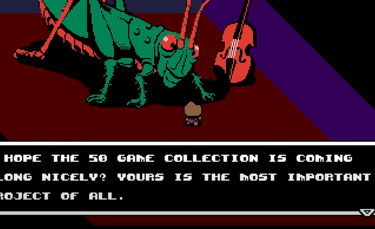
UFO 50 - Every Game Played and Graded, Part 2
The Collection's Second Twenty-five Tried and Analyzed and Waiting Below
UFO 50 is an interactive homage to the 8-bit ‘80s, a celebration of the “pixelized” style and a certain “try and die” philosophy of design. What it’s not, however, is a direct tribute to the Nintendo Entertainment System, that 8-bit machine of Mario and Mega Man and Castlevania fame. As seen in UFO 50’s boot up sequence, the games don’t represent any specific console, don’t favor the style of any hardware or brand. Indeed, the games as shown aren’t even cartridges, but diskettes…suggesting a bias towards the Commodore 64-side of the divide.
What was developer Mossmouth’s true intention? The best clue comes from UFO 50’s boot up which, through a montage of badly dithered photographs, reveals the team’s startling discovery—the mysterious LX, an awkward console/PC amalgam lost to the drafts of time. This strange cobbling of monitor, disk drive, and gamepad seem more akin to prototype than final product, more junkyard art than serious game machine. But in this version of history, the device was the home to a decade’s trove of games. Fifty of them, in fact, crafted and collected by UFO Soft, their mysterious developer. Recently “rediscovered” by Mossmouth, they’ve now been restored to the world.
It’s all a pretense, of course, a clever meta-narrative designed to frame an otherwise discordant collection, but it’s also a fabrication meant to conceal an even deeper tale reminiscent of the greatest urban myths. For those who dig beyond, or in-between, the fifty diskettes, a steep tale of trails exists—a rabbit hole far transcending UFO Soft, the LX, and its 50 forgotten games. Anyone willing to open that metaphorical box, to unpeel that figurative seal…will unearth an especially cryptic and creepy 51st game. The “preservationists” at Mossmouth did more than uncover a lost history, they unearthed a mystery. An uncanny, almost liminal 51st dramedy of tragic pretension.
Which might explain why, from a more grounded perspective, many of UFO 50’s games are unnervingly imperfect. Are the shortcomings the fault of Mossmouth, the games’ real-world creators, or does the blame fall on UFO Soft, that what-if developer that never existed but maybe, in a sense, sort of did? Mossmouth’s true brilliance lies not within its quality or quantity of games, but with the quantum paradox that protects them so well.
Indeed, if any of the games are bad, blame UFO Soft. If the games don’t seem to properly match any specific time period or console, blame the LX platform and its indeterminate existence. And if the games are too difficult, don’t offer enough lives or continues or ways to save?
Well, Mossmouth gets the blame for that; clearly, removing continues and forcing redos was a contrivance to hide the obvious. For a collection offering fifty reportedly “full-length, complete” games, some of those shorter, flimsier titles had to be stretched...and if not by actually making them longer, then by making them arbitrarily harder.--D

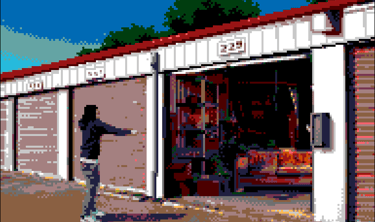

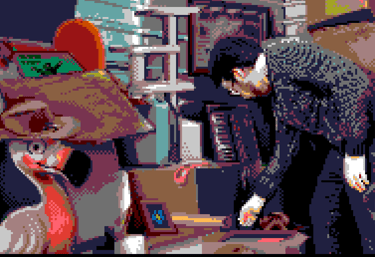

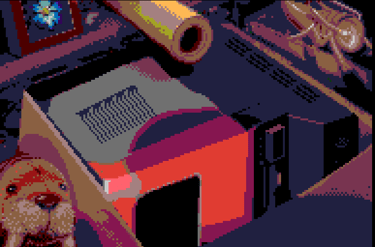
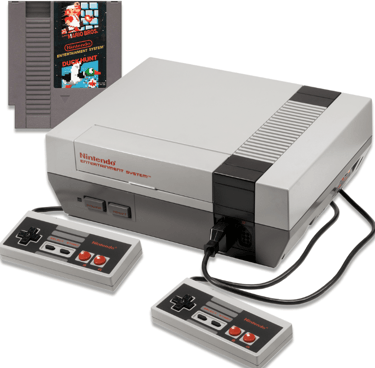



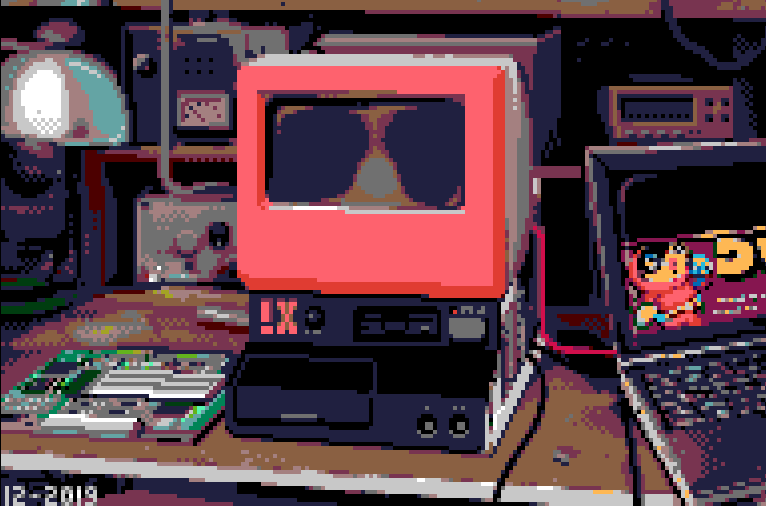

The Nintendo Entertainment System (below)
Commodore 64 (above)
The (fabled?) LX Console/PC Hybrid
For those who pay attention to UFO 50's opening sequence, a great discovery is revealed: an ancient trove of hardware buried in a forgotten storage shed.
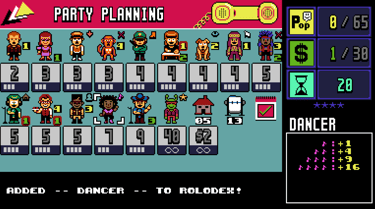

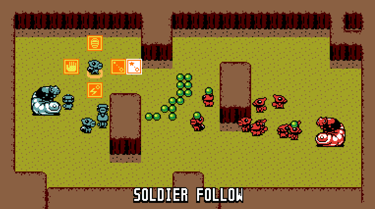

Games like Party House (above) and Combat Ants (below) don't have any direct equivalents on the NES, dispelling the assumption that UFO 50 is a direct tribute to Nintendo's famous system.
UFO 50's meta-narrative is its own twisty journey, revealing more than anyone was ever ready or willing to know. For those who dare, YouTuber FuryForged delves into the lore, the clues, the backroom mystery.
Blue Title - Worthy
Yellow Title - Worth Exploring
Red Title - Unworthy
Orange Title - Worth Ignoring
Grading Key:
UFO 50's Final 25 Games Played and Graded (26-50)


Remember, these "reviews" are considerable but not comprehensive. Think of them more as impressions than de facto declarations of their quality. The games are so varied, so strange...even the better titles might prove unappealing to those of certain tastes and persuasions.
Vainger – UFO 50 has plenty of Metroidvania-style titles, but Vainger perhaps comes closest to the “Metroid” look and feel as commonly expected. Players command a cyborg who must shoot its way through a cryptic facility, collecting weapons and other tech to surpass obstacles otherwise impassable. More than just exploring, Vainger adds the gimmick of gravity reversal, allowing its protagonist to walk across ceiling and floor alike with a double-tap of the jump button. It’s fun…sort of…but feels overused to the point of annoyance. Worse, insta-death spikes line the shafts and corridors, making the back-and-forth navigation more of a hassle than what is found in the best examples of the genre. Vainger is still a good addition to the UFO 50 lineup, but for gravity-defying hijinks, WarpTank is the collection's better pick.
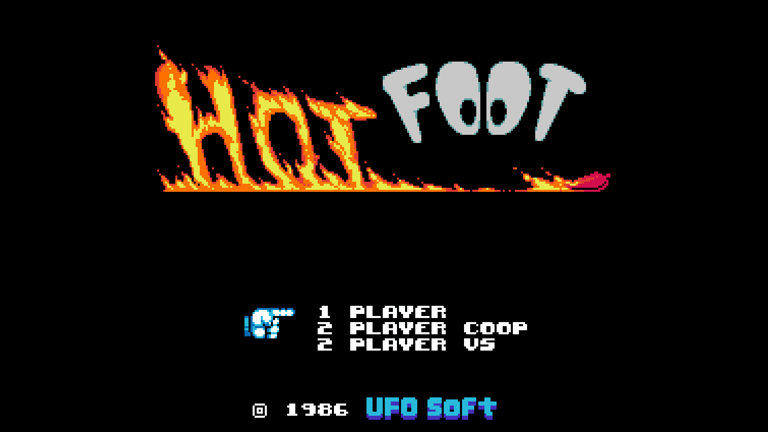


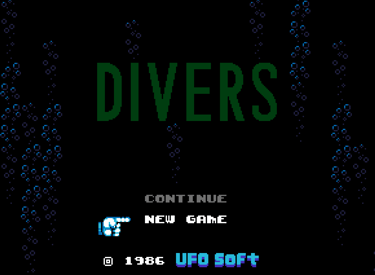
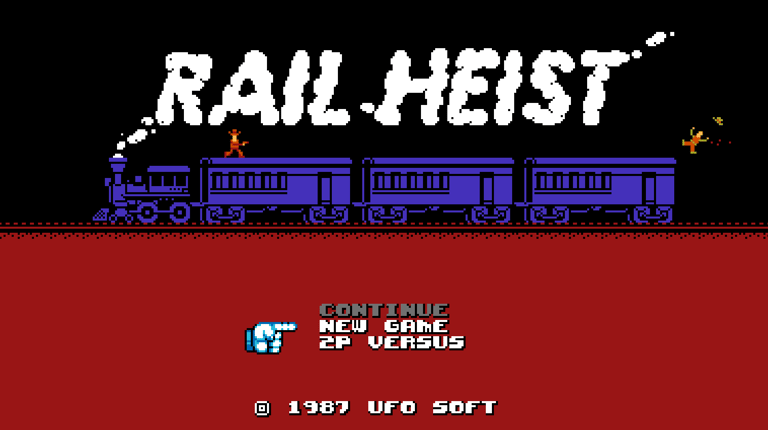



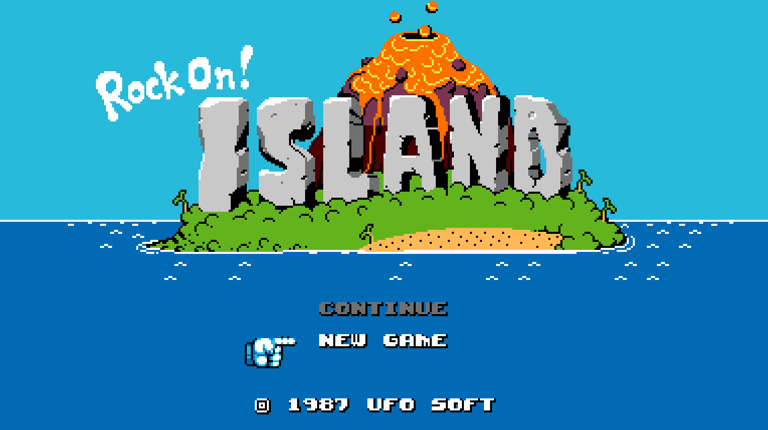

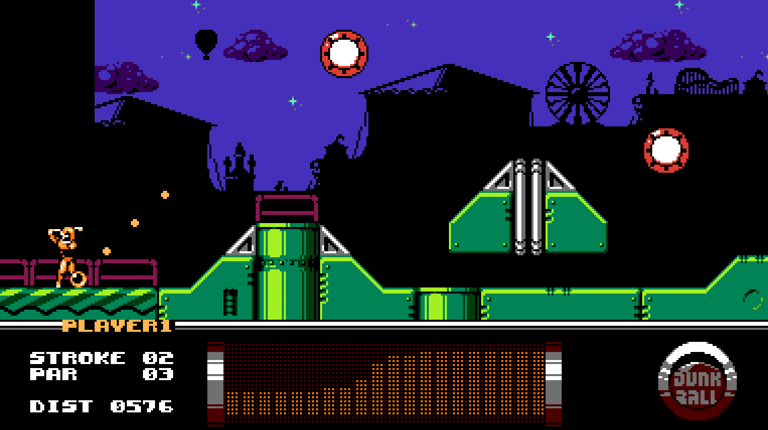

Hot Foot - Following the style of "sports" and "fighting" already laid by Bushido Ball, this more contemporary take on dodgeball and its ilk pits teams of two flinging bean bags across a gymnasium floor. It's pretty simple, with characters beaning each other for points and glory. Like Bushido, special moves and powered-up throws can be enforced, and projectiles can be ricocheted for trickier hits and fancier scores. Overall, the game is okay, but feels like a "quickie" to reach that fifty, a game that smacks of filler, a mere derivative of better games within and without UFO 50's greater package.


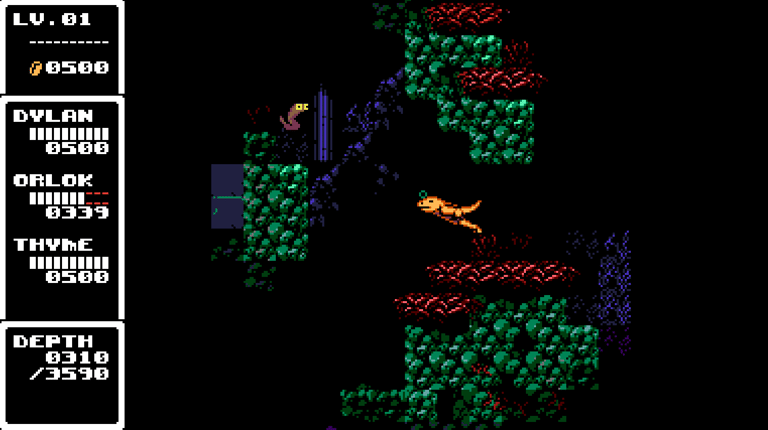

Rail Heist – As a side-scrolling, real-time stealth game with some turn-based proceedings, Rail Heist wins points for just being different--it's a truly inspired mix of mechanics placed within a clever, Old West setting. Its one limitation, however, is scope; every level is another train to infiltrate, leading to a sense of blandness and repetition that diminishes the game's overall impression. With more development time put into expanding its scenarios and obstacles, Rail Heist could easily be a faux-retro classic. But, as is, the game feels like the first act of a grander, unfinished experiment.
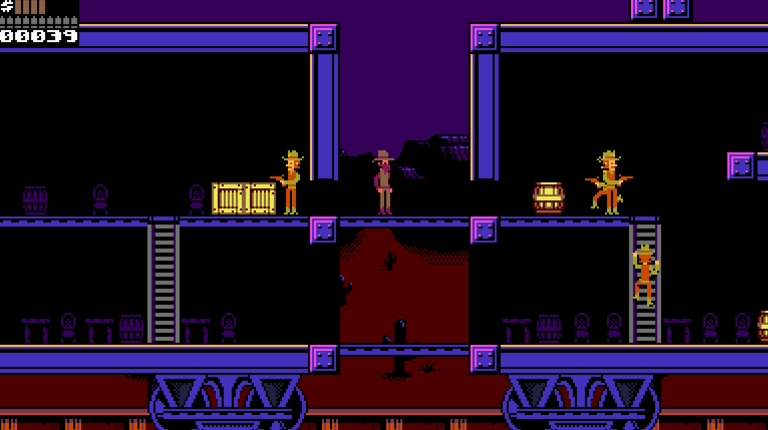

Divers - A strange RPG that clearly recycles the Sub-nautical Porgy engine, this game sends a trio of lizard people--divers--into the murky depths of an oceanic labyrinth. Movement is slow, visibility is limited, and contact with the always-lurking enemies reduces the game into a mundane, turn-based "let's trade hits until one dies" sort of affair. Early on, even the simplest foes are dangerous, which means players will have to exercise some heavy grinding and ponderous caution. Whether Divers is "good" really depends on one's tolerance for its brand of plodding, cryptic adventuring. Likely, most will just scratch their heads before returning to Porgy or any number of UFO 50's many Metroidvania-esque quests.
Rock On! Island – Yet another strategy game…but this time, it’s of the tower-defense mold, resembling everything from Fieldrunners to PixelJunk Monsters but with a prehistoric theme. As the inexplicable cavegirl Zola (apparently, the women wear the pelts in this society), players must “spend” meat to raise defenders against a constant onslaught of reptilian and saber-toothed invaders. These critters barrel out from one side of the map and begin wending their way towards the opposite end; should too many reach the cave-clan's entrance, it’s game over and yet another retry. And an emphasis on that retry—the game gets tricky, fast, with little room for error in both the placement of troops and whom to upgrade for the higher, trickier waves. Overall, it’s more a game of trial-an-error than true brain bender, and with no rewind feature or checkpoints within matches, it’s patience—more than smarts—that will see players through to the end. Fun but unremarkable.
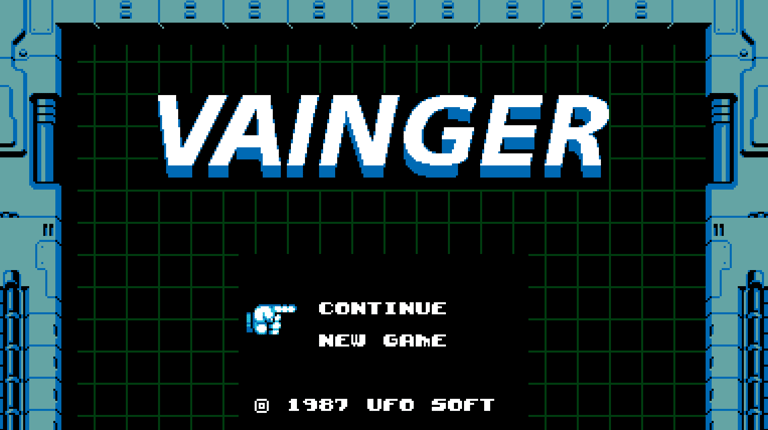

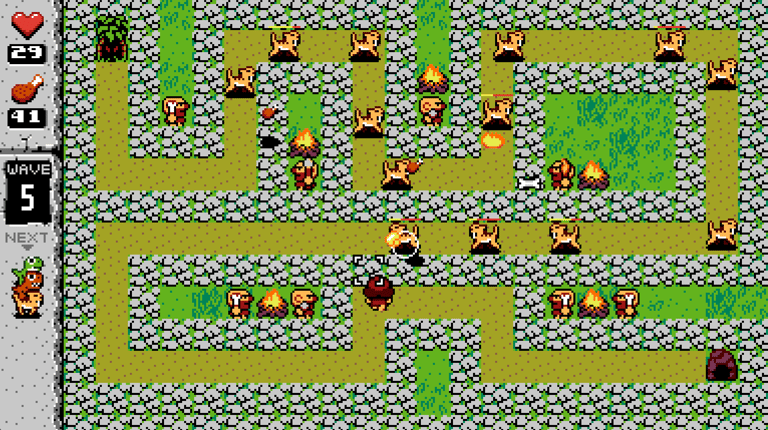

Pingolf - Mobile gamers are probably aware of the Super Stickman Golf series, a surrealistic version of the sport in which a nondescript golfer must navigate a series of absurdist courses filled with obstacles and travails completely removed from reality and, certainly, a staid game of golf. In short, it was fun…and Pingolf essentially copies the concept with a futurist twist. Robots, not humans, are now the pro-golfers, and the courses—more than a gauntlet of pits, valleys, and water hazards—can be better likened to the innards of a pinball table. Bumpers, plungers, bouncers, and backgrounds are all depicted in that classic dithered 'n garish Commodore 64 aesthetic. The physics are satisfying and the presentation is excellent…but, as with a lot of games in this collection, the difficulty spikes fast with a steep learning curve. Compared to the (seemingly) aimless Golfaria, however, this is the golf game to play.
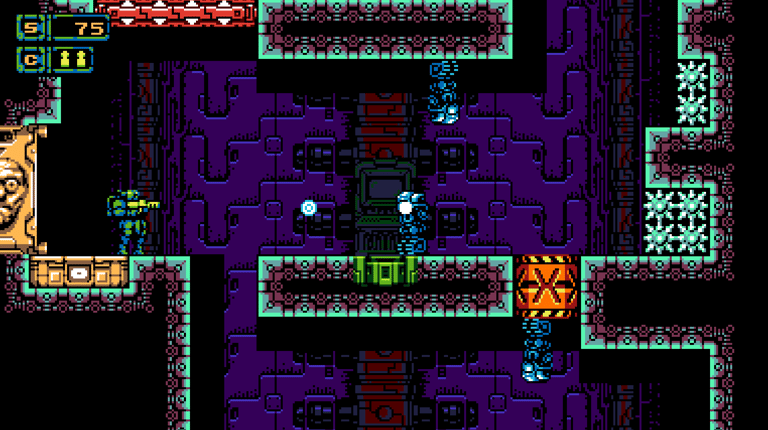


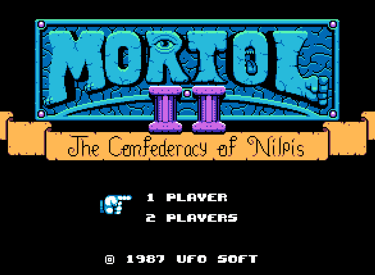


Mortol 2: The Confederacy of Nilpis - More a spiritual sequel than a direct follow-up, Mortol 2 converts the first’s get-to-the-end gauntlet for a more open-ended, go-anywhere experience. Which means this is yet another adventure-platformer tied to the original’s try-and-die, trial and error dynamic. Beyond the deadly world to explore, the game’s biggest change is in its the dark-fantasy motif—players get 100 resistance fighters of different classes to slash and scrounge their way through a ghoulish world that hates them. Indeed, more than the motif, death is the active motive and gimmick, with some characters more useful dead than alive as they sacrifice their lives for the sake of their poor successor. The warrior, for instance, can turn himself into stone to allow another to use his now lifeless form as a foothold, while the bomber is essentially useless beyond detonating herself to open new passages. This makes for a plodding experience until players retry enough times to learn the land’s traps and hazards and then plan accordingly, devising a proper route and approach. In this regard, the game feels more akin to Barbuta, another title that sends an overly weak character against a host of horrors. The clear winner, however, is neither; Mortol 1 is the most accessible and addictive of the three. Probably play that one.


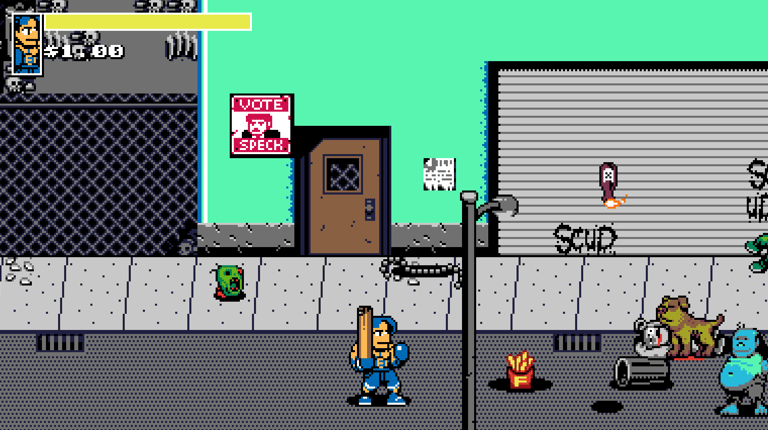

Fist Hell - Although the brawler was a prime fixture of the ‘80s, it’s barely represented here; Fist Hell is Mossmouth’s one attempt in encapsualting the entire genre. But more than beating up thugs or schoolyard bullies per its source inspiration—River City Ransom—the game goes for a more Night Stalkers or Zombie Nightmare approach, albeit within the limitations of the 8-bit aesthetic. And had the time been given to better polish its mechanics, the game could have been fun; the game’s four characters all pack some stylish, easy-to-deploy moves and can wield a wide range of weapons, even hurling severed zombie heads back at their dismembered attackers. But movement is sluggish, hit detection is iffy, and the enemies grossly overpowered for a game granting only one life before a reset to the beginning of the stage. Grabbing money on the street can lead to some much appreciated upgrades in strength and resilience, but it’s a feature that feels halfhearted with money never coming in quite the quantity required. Fist Hell is a zombie groping for life, for a second chance…never surpassing the classics it tries to mimic.
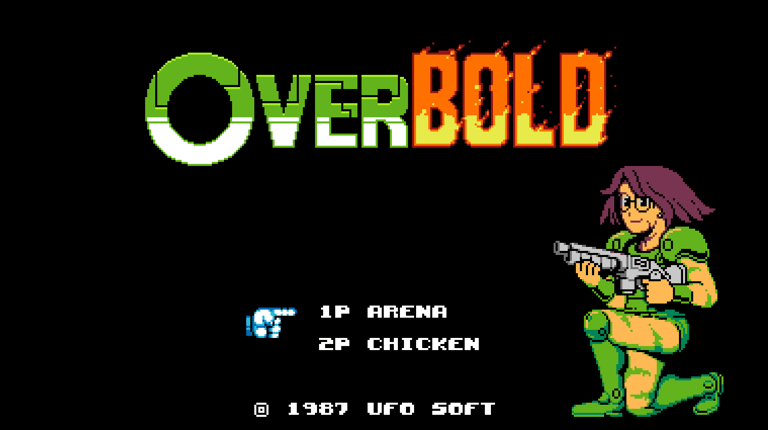



Overbold - The heroine of Velgress returns for another survivalist farce, this time trading an ever-rising flesh grinder for an arena of ever-spawning, encroaching aliens. It’s really just a shoot/move or die affair, with players upgrading their stamina and weaponry between rounds before having to endure the next wave of exploding, shooting, or multiplying baddies. And those enemies…whales and jack-o-lanterns and dodo-like birds…feel generic to the point of not making sense. Which says a lot for Overbold itself—like its predecessor, it smacks of being a quick hack of a different game, lacking any kind of particular depth while being made arbitrarily, artificially hard. The character is slow, can’t dash or dodge beyond merely walking away from every threat. And this makes for a game not only trickier than it should be, but, upon completion, an altogether flimsy experience.
Campanella 2 - A more open-ended extension of the first game, Campanella 2 combines its inertia-driven thrust-and-drop gameplay with open-range environments filled with baddies and traps and items to grab. Despite their obvious differences, the overall vibe matches that of the Rygar and Blaster Master vintage experience—just as games like these often swapped their side-scrolling proceedings with some overhead action, Campanella 2 sometimes switches out the usual flying with some on-foot, run-and-gun blasting. It’s a varied, multi-layered approach that, unfortunately, is hampered by a challenge that discourages said exploration. With time limits and limited fuel and life bar limitations, the game restricts its own fun by burying players in the sheer struggle for survival, an onerous juggle of having too many tasks without a moment to regroup, rethink, relax. A difficulty setting or, really, just a more forgiving save system, would have helped make Campanella 2 a game for all ages. But, as it currently stands, this is a game much like Milton Brad;ey’s board game Operation. Touch a side, and die. But while everyone likes the board game, Campanella will remained cursed to obscurity.
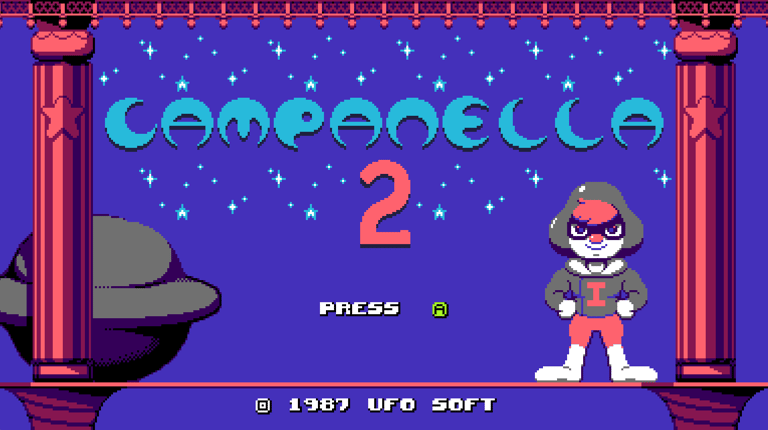

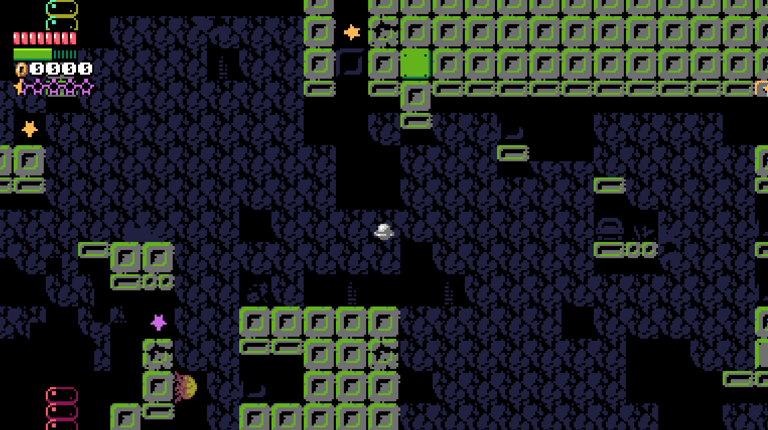

Hyper Contender - Another of UFO 50’s “alternative” fighting games, this is a one-on-one arena fighter in the tradition of Smash Bros. and, more accurately, TowerFall. In essence, two squat characters bound around a stage, hurling projectiles and executing special moves while springing to collect rings materializing throughout the room. The first to collect five of these spinning devices wins the match in the vein of Power Stone, one of the genre’s best examples. Sadly, Hyper Contender is nowhere near the quality of these aforementioned games; serviceable but insignificant, the title’s most noteworthy feature is its low level of difficulty. Although opponents do sport some interesting attacks, most can be felled quickly by virtue of the game’s unlimited continues. Which means, for most gamers, Hyper Contender’s true value will be in its easy achievement—a guaranteed victory for those struggling with the others. A game to beat…and then forget.


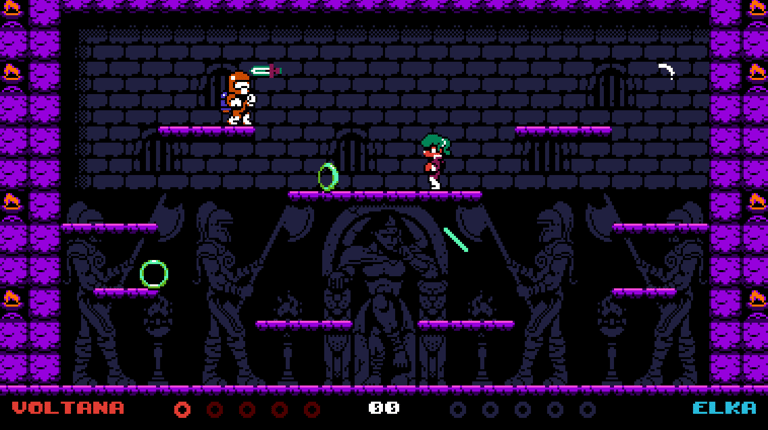

Rakshasa - UFO 50, despite it being an homage to the entire 8-bit age—and despite it a FIFTY GAMES collection—still skimps significantly on certain genres. The maze game, the Tetris-style puzzler, and the Mario-esque platformer don’t get much attention. And the same can be said for run-and-gunner; Rakshasa is the closest the collection gets to reproducing the likes of Contra, Karnov, or Ghosts ‘n Goblins, being essentially a hybrid of all three. And it’s pretty good, featuring a portly protagonist running to the right as enemies constantly spawn and charge from the other direction. Power-ups, from a spread shot to a homing-like projectile, can be collected to more easily thin the incoming hordes, and the boss fights can be both climactic and clever. There’s even an interesting death mechanic in which, once the player falls, he has a chance to guide the hero’s soul back to his fallen body before enemy wraiths interfere and permanently end the game. The drawbacks, however, are with the stodgy controls and freewheeling enemies; the former can’t always properly deal with the latter without a lot of practice. And with no continues and a very limited (and unreliable) live count, Rakshasa is a tough game to see through. It may be worth the effort…or players can simply boot up a game of Contra instead.

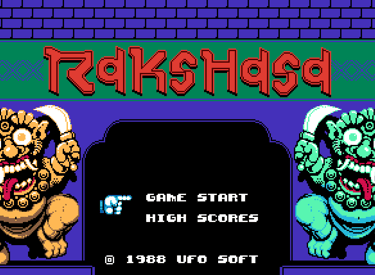


Valbrace - One of UFO 50’s most ambitious titles, Valbrace, in truth, feels more akin to a 16-bit game in terms of presentation, graphics, and gameplay sensibilities. Indeed, the game’s (quasi) realistic sprites and smooth animation contrast sharply with much of the collection’s other offerings; it’s such a marked outlier, in fact, it feels like the product of an entirely different company or timeline. Essentially a first-person dungeon crawler, Valbrace trades the usual turn-based fighting with an action-focused system similar to Punch Out!! or, more recently, Infinity Blade. This means dodging and blocking enemy attacks in real time while swinging blades and casting spells, the latter of which requires players to literally draw magical runes while in the heat of battle. Enemies are feisty and fun to slay, there’s a slew of items to equip, and secrets are everywhere. If the game has a flaw, it’s the repetitive nature of the dungeon floors, which lack the variety to prevent monotony or the likelihood of getting lost. The use of spike traps and other obnoxious surprise attacks do the fun factor no favors, either. Nevertheless, Valbrace is still among the collection’s best; this one deserves a separate (and improved) release or maybe an all-out sequel.
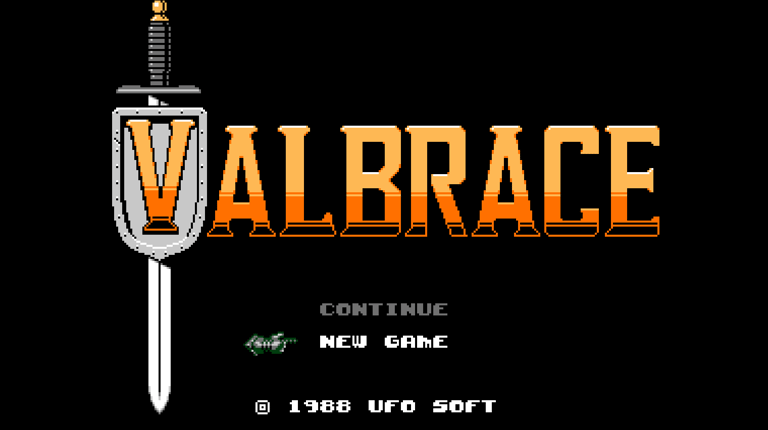

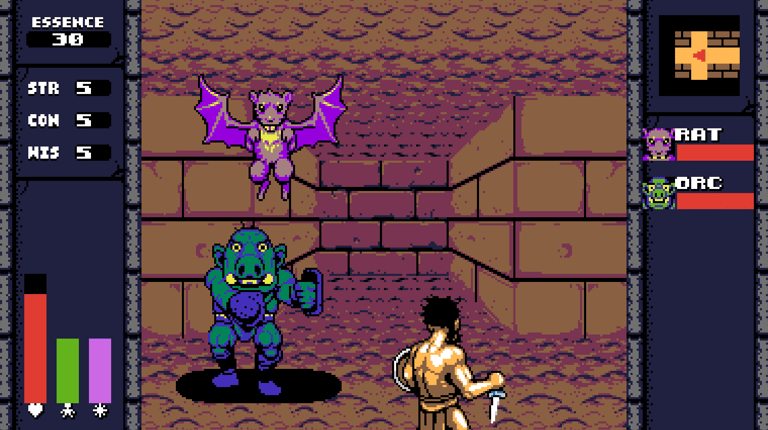

Night Manor – As UFO 50's one true point-and-click adventure title, Night Manor is an exemplary experience. Good graphics, eerie atmosphere, spooky music…and puzzles that can be solved with just a smidge of common sense. There’s even a freaky psychopath that constantly stalks the player, appearing with quasi-randomness as the unnamed hero ventures through the god-forsaken manor. Should the maniac appear, players can either attempt to flee the monstrosity, or hide in a few predetermined areas where a simple reflex-driven mini-game then determines survival. Not that "death" matters much; doom simply means a return to the original room where the player can then venture out again. But Night Manor, as with many games in this collection, feels more like a polished copy of a greater game, an almost generic alternative to what’s already been. The story is okay, the gameplay is basic; even the game’s always lurking nemesis soon devolves from horror to chore, often obstructing progress (again and again) when the player just wants to explore. The perspective system is also off—rather than redrawing each room based on where the player entered, each area is always displayed from the same perspective, leading to some confusing navigational issues (a problem the included mini-map tries to alleviate). Nevertheless, this is still a bright point for the collection, once again shirking the usual UFOSoft-stylings for something truly different. If not perfect, it’s still recommended.
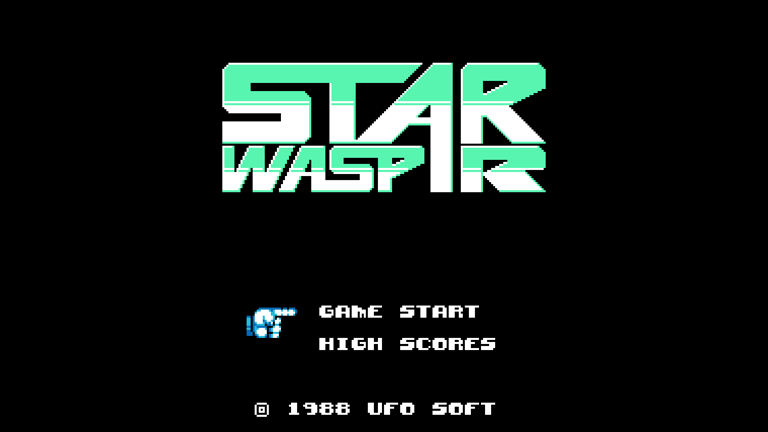


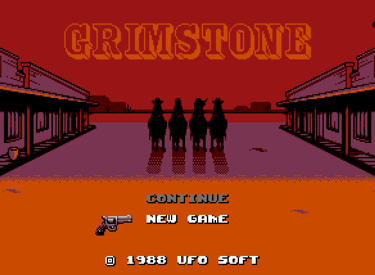
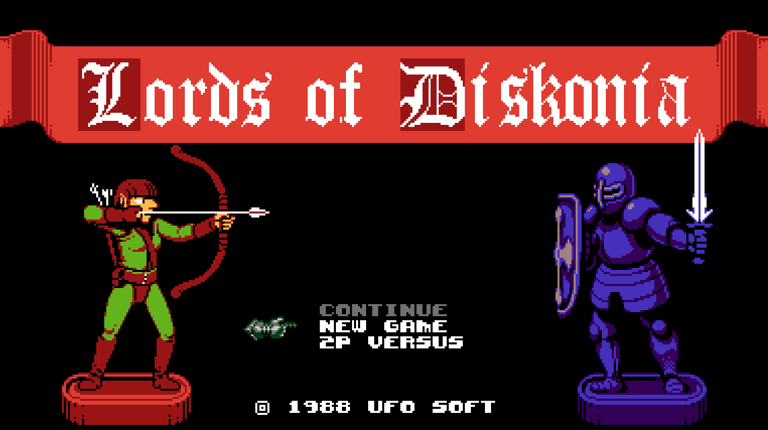



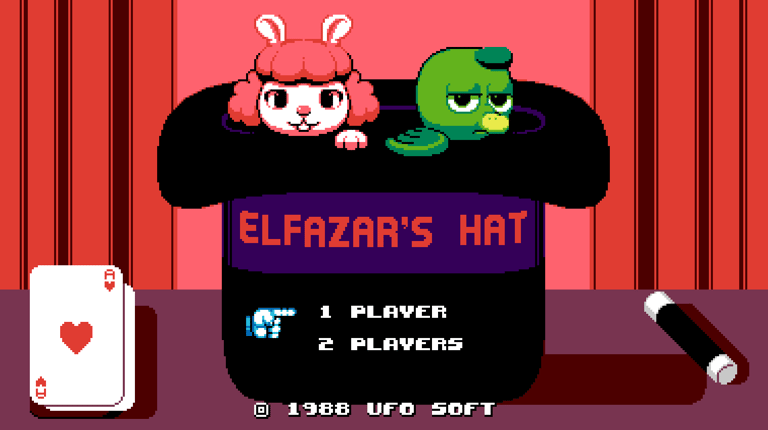


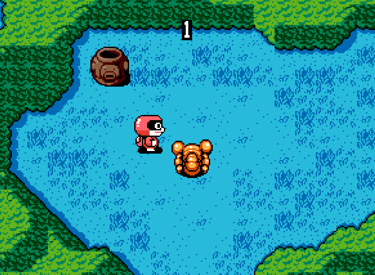
Star Waspir - As the only other space shooter in the UFO 50 lineup, Star Waspir provides gamers with the second half of the shoot ‘em up equation; while Caramel Caramel offers horizontal, side-scrolling action, this effort takes the overhead, vertical approach for a more hectic experience. And, indeed, the game is busy, with enemies and projectiles always a swervy swarm on the screen, a constant juggle only made worse by a similar deluge of falling power-ups. These raining symbols of Es and Gs offer boosts and upgrades to the primary weapon and its secondary artillery, respectively. To gain these attributes, however, players must collect three of the icons consecutively, which isn’t always easy considering the maelstrom of activity always on screen. No doubt, the game starts hard and gets brutal quick, a reality that isn’t helped with only two starting lives (why?) and the three selectable, underpowered pilots. Wave 3 is especially harsh, with slowly-descending asteroids getting lost amidst the flurry of homing projectiles and other hazards. In short, the game is probably too busy for most players, but from a design perspective, there just isn’t much design defining the levels themselves. Just lots of baddies dive-bombing and firing against different backdrops. The core of a good shooter is here, but like many of UFO 50’s titles, this is more veritable prototype than professionally-finished game.


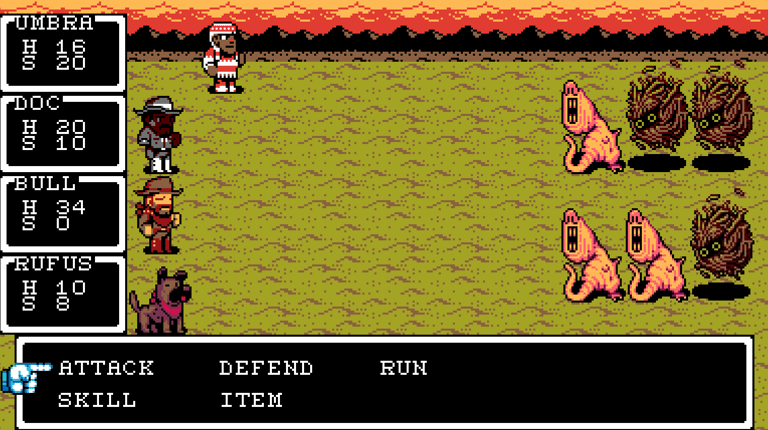

Lords of Diskonia – Diskonia, despite its strategic pretensions, is really a game of angles in the vein of shuffleboard and billiards. The difference is in the hit points; rather than earning points, the object is to deduct them from the other side by sliding one’s discs into the opponent’s own. Before battle, players can spend resources on new “recruits”—discs of various sizes and stamina levels. And once the skirmish commences, opponents then take turns propelling their discs at each other, taking advantage of walls and other embankments to maximize damage. For example, the player might thrust one of his “men” into another of his own pucks, thus ping-ponging that one into a cluster of enemy forces. Of course, should the opposing force survive the clash, that lone disc will likely be obliterated on the returning serve. Complicating matters are the gold mines, healing founts, and other bonuses sprinkled around the arena that players can target in exchange for a turn. It's all fun in theory...save for one dampening flaw. The camera. Everything is zoomed in far too close, making planning and aiming more complicated than it should be. The battling also becomes repetitive, making this a game best played occasionally with friends. The CPU, bearing no more personality than a plastic chessboard, is a poor replacement for a smack-talking human.
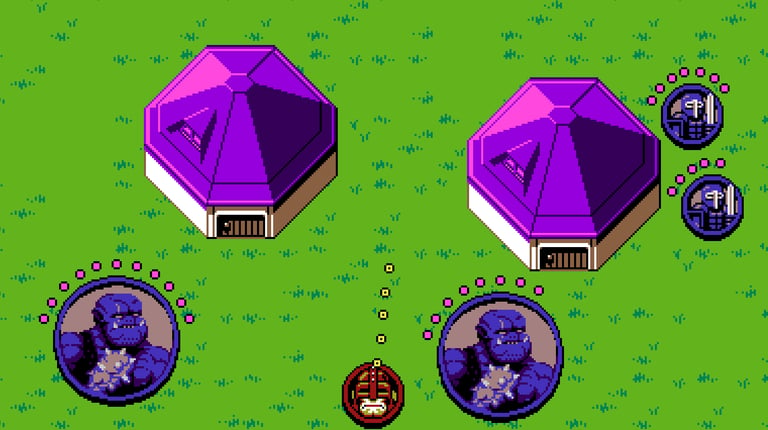

Grimstone - Like Pilot Quest, Grimstone is meant for a very specific audience; those who don’t appreciate the odd nuances of the 1980s-era RPG can probably give this one an automatic pass. Which, in some ways, would be a shame--Grimstone is a sprawling quest set in a fascinating, Old West-esque setting where its world-weary mortals are caught in-between the sides of a celestial war. The overworld map is large, the battle system is both interactive and engaging, and there’re plenty of items, weapons, and other accoutrements on which to spend one’s earnings (teeth being the leading currency). And, in a nice nod to Zelda 2, the enemies roam visibly on the map, offering players some degree of evasion. Yet, in the end, Grimstone is but an 8-bit tribute to the best and worst of that once nascent genre, a time where the RPG concept was still being developed, a time in which the genre was still struggling for acceptance—and for good reason. Grimstone can’t hope to overcome the shortcomings inherent to its source generation: it's rife with "quirks" that might prove charming to some but be absolutely annoying (or boring) to others. Indeed, with remakes/remasters of the superior Phantasy Star and Dragon Quest 3 readily available…why would anyone play Grimstone first...if at all?
Elfazar's Hat – An impressive cuter-shooter in the vein of the classic Pocky and Rocky. Indeed, a pair of animal heroes (alone or in co-op) must battle an evil wizard’s madcap minions through a variety of fanciful levels. The gameplay, if not brilliant, still provides reliable fun with a card system that, should the right sequence of symbols be collected, grants the protagonists some interesting abilities. The game also features a fun dodge move that helps compensate for the characters’ otherwise stodgy movement speed. Better still, the game actually offers a continue system, softening the challenge to the point where anyone with enough persistence will reach the end. A polished, accessible title without the usual sharp difficulty, but with a hidden “happy” ending for those who are willing to work a little harder.
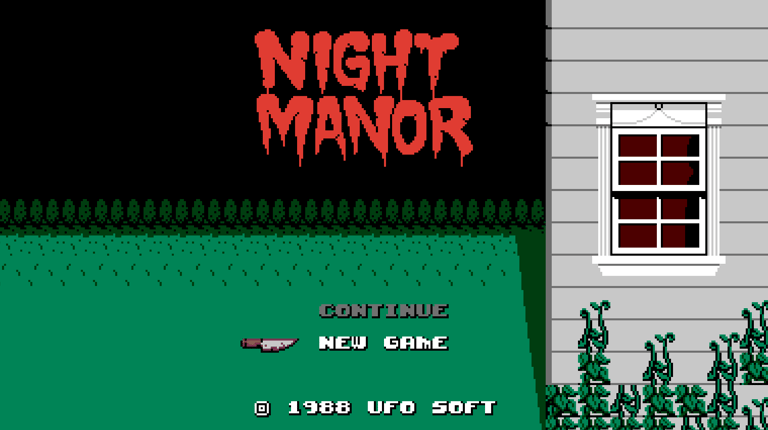

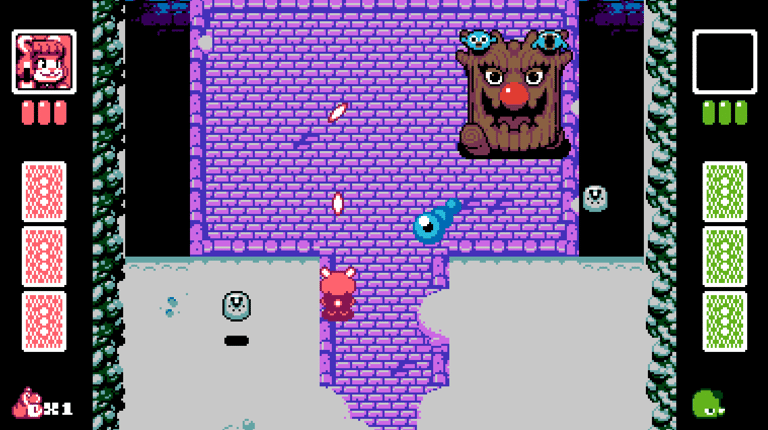

Pilot Quest - As a sort of side-story to the Campanella franchise, the oddly-named Pilot Quest (the game isn’t about flying) sees its marooned hero exploring a planet for resources in attempt to rebuild his doomed spacecraft. Truthfully, this isn’t a game for everyone, feeling more akin to a sandbox title of the Animal Crossing or even No Man’s Sky mold. Which means, for many, the game is a time-grinding, mind-numbing experience—collect enough of those to buy these, which can then be converted into this, which is then needed to power that (which can’t be built until another whole slew of materials is gathered or crafted). Indeed, players begin Pilot Quest with the drab task of mining so-called “moon shards”…just so they can eventually buy some meat…which is then needed to access the greater world. And while out in those wilds, even more resources must be gathered amidst dangerous foes and a cruel, grueling time limit. An addictive quality does exist within the back-and-forth madness, and helpfully, resources can be grown/earned automatically even when the game is exited. But the tedium is real, and is doubly-confounded by poor hit-detection and the lack of a worthwhile story—even the building element is far more restrictive than what the average Animal Crossing fan would ever expect. Which begs the question: although it’s an okay game overall, why would anyone play Pilot Quest over the dozens of better examples already crowding the market today? The game was fine in its imaginary 1989 time, but there’s no reason to play it here.
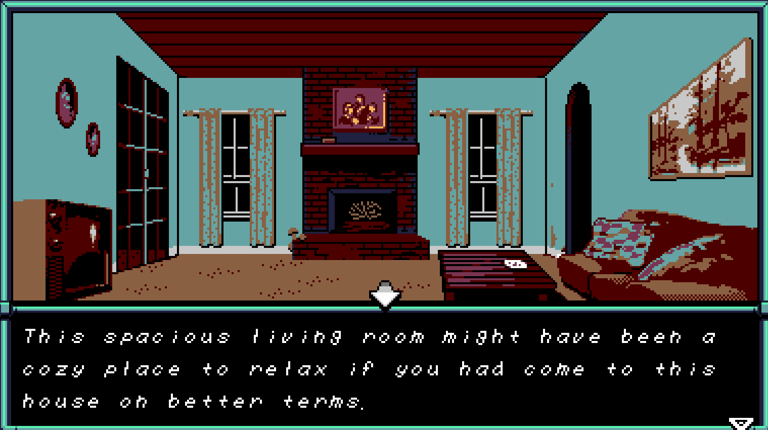

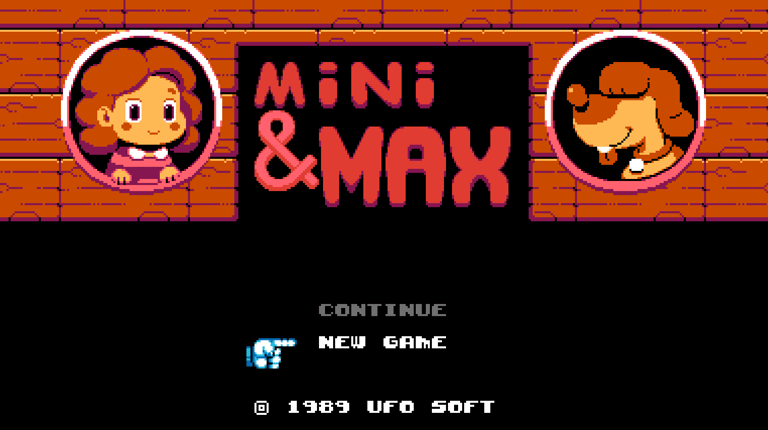



Mini & Max - One of the more interesting games in the collection, Mini & Max mixes Capcom’s Chip ‘n Dale Rescue Rangers block-tossing mechanics with some Monster Boy-esque open-ended adventuring. Mini, after being locked away in a closet, decides to escape by literally shrinking herself down to the size of a bug. A bizarre quest then ensues as she discovers a whole civilization of teeny denizens and gigantic critters, some helpful, some hostile, as she tries to root a way out. Although it’s an easy fan favorite of the fifty games, it still suffers from lazy pacing (expect a lot of aimless wandering early on) that’s bound to drive some players away.
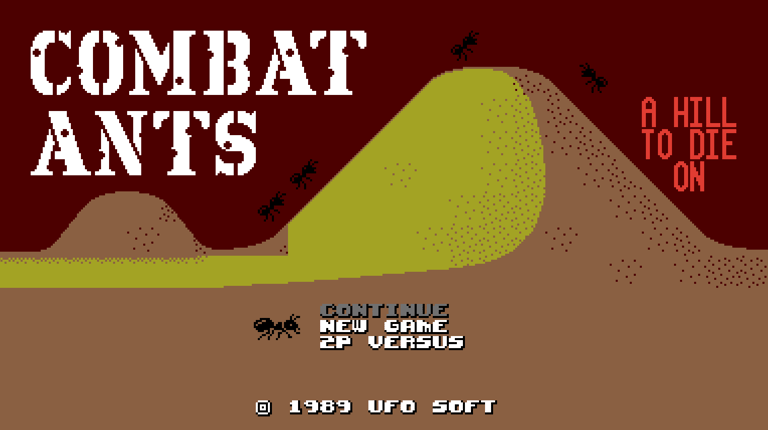

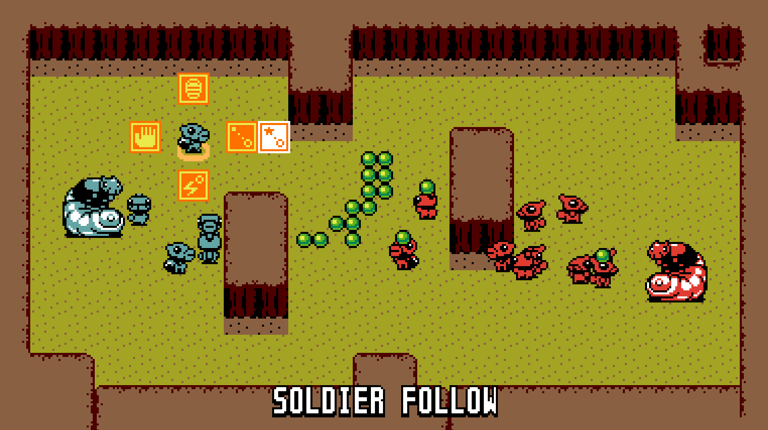

Combat Ants (Combatants) - A real-time strategy game that’s so slow and stodgy, it might as well be turn-based. That’s the best that can be said for Combat-Ants’ boring gameplay of moving ants to and fro, bringing food to a Queen always ready to produce additional troops—workers to gather more grub, and soldiers to better defend against those pesky red ants. Or rather, the evil “Red Horde.” The game could have been a clever take on Cannon Fodder or, natch, the vintage SimAnt. But slow proceedings and unresponsive units make the entire affair both chore and snore. The only positive is that, for as unreliable as the friendly AI is in following user commands, the enemy intelligence is even worse—giving players, if they’re careful, a slight advantage...if they're inclined to even try.
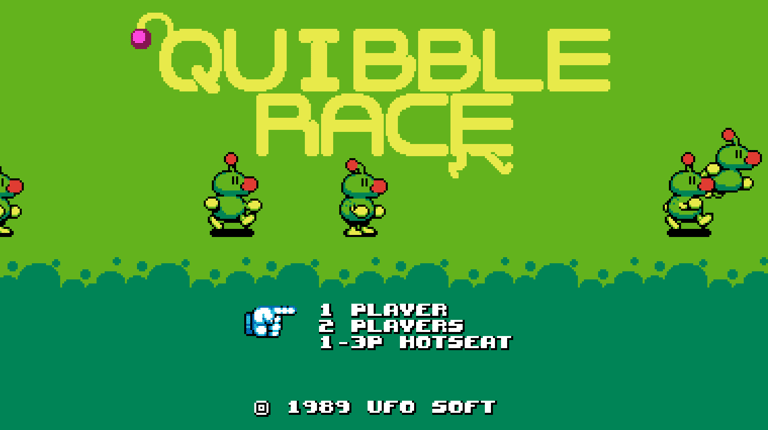


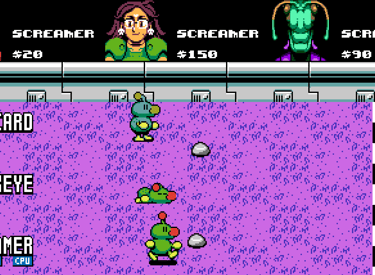
Quibble Race - For a collection that skimps on a number of popular ‘80s genres (the falling-block puzzler, the maze-game, the paddle/ball brick smash, etc.), it’s then strange to see this—a sci-fi themed gambling simulator set on a sci-fi-themed race track. Yes, instead of placing bets on horses, the money goes to a so-called Quibble—a pudgy, bi-pedal creature who ambles more than gallops to the finish line. The game does have a dark sense of humor; players can spend extra money to poison, injure, and otherwise impede the competition, a strategy that is often necessary to ensure consecutive victories. “Winning” the game rests on who has the most cash at the end of a chosen number of races, but most players will keep the rounds to a minimum—the game is cute but not particularly fun in the long run.
Seaside Drive - UFO 50 slights a bit on the arcade-style experience, making this 47th offering a surprise treat of the “easy to learn, hard to master” kind. It’s a shooter, essentially, but limited to a car that can only move left-and-right on the road below as airborne enemies attack from above. Players must fire back in a sort of sway-and-spray motion not unlike the famous Metal Slug walker from SNK’s eponymous series. The real gimmick, however, is the overdrive mechanism—to keep the gun charged at maximum strength, the car must drift (constantly retreat left) to rebuild the gun’s (kinetic?) energy. For ground-based foes, a simpler second gun must be brandished, forcing the player into a furious to and fro, give-and-take struggle of firing, switching weapons, pulling back, and thrusting forward. There’s even a weird block breaker-style mini-game available to grant extra lives. But while the gameplay is sound, the game still bears a slight “proof of concept” feel; enemies, in some cases, are literally shapes bouncing around the screen, suggesting a certain lack of time/effort on the developer’s end…which, frankly, is an ongoing trend of the collection. And at only four stages, the game is incredibly short. Nevertheless, for those craving more out-right action from the collection, Seaside Drive is a brief but compelling excursion.


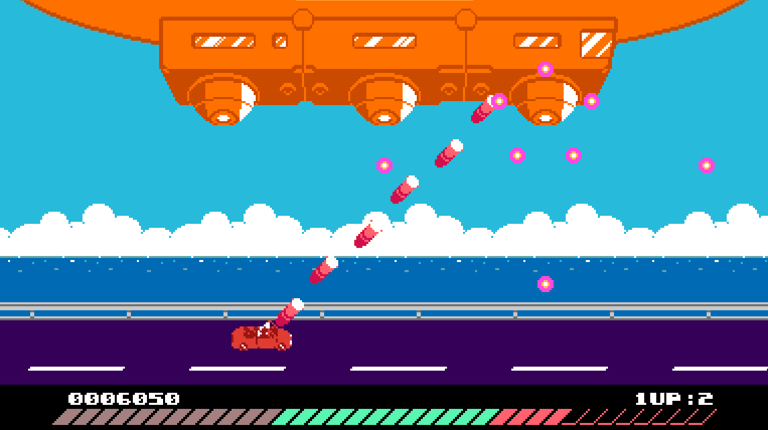

Campanella 3 - After two side-scrolling affairs of tricky flying and squeezing through cracks…Campanella 3 goes “modern.” It goes 3-D! Or, at least, it shifts the perspective to being behind the ship in what could be compared loosely to Sega’s Space Harrier or SquareSoft’s 3-D WorldRunner. The gameplay is much like any rail shooter—players must weave a ship around incoming projectiles while blasting baddies hovering in the distance. The twist, in this case, is the perpetual grid that encloses the ship. Like a cage, it restricts movement to a specific set of parameters, keeping the player contained as enemies enter the same cramped domain. Now no longer in front of the ship but beside it, these up-close and personal foes must be felled by a secondary gun meant precisely for these intimate situations. In essence, Campanella is a mixture of short-range and long-range blasting with some deft maneuvering in-between; players must learn when to toggle between their shots and/or simply dodge the incoming enemies. It’s a clever take on a well-established genre with one unfortunate quirk; enemy shots are often hard to track, making evasion less intuitive than it should be…especially when considering the genre. Which is to say this isn’t quite 8-bit Star Fox despite still being a fine addition to UFOSoft’s eclectic canon all the same.
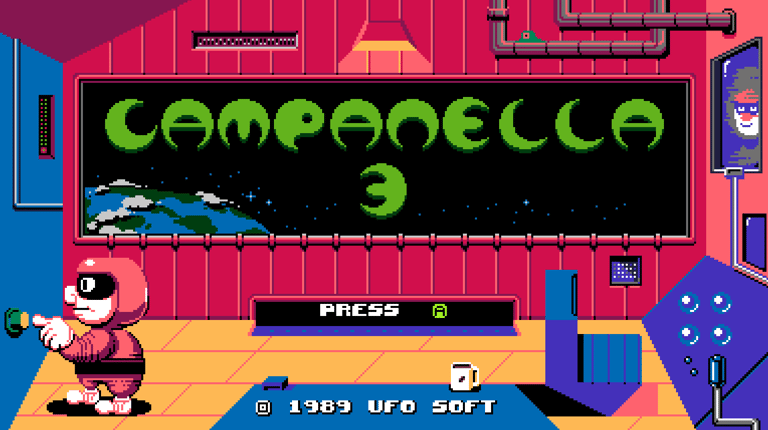



Cyber Owls - UFO 50’s final title is unusual in that it’s really a collection of four; a quartet of anthropomorphic animals (mostly owls) must locate a stolen nuclear warhead lest the world go by-by. Each hero packs his/her very own brand of gameplay: The tank character gets a mission not unlike the sleeper-classic Shatterhand in which he punches and pummels his way through an enemy compound; a much daintier owl gets a stealth mission somewhat reminiscent of the original Metal Gear in which sneaking, not fighting, is the key; another female owl goes to the jungle for a gallery-shooter stage reminiscent of Cabal or NAM-1975; and an inexplicable lizard-man gets a shooter stage of simple, fast-blasting driving action. Ultimate victory rests on completing each mission; there’s even a fifth, tactical challenge players can initiate to “rescue” an owl lost during an unsuccessful run. The game’s variety is no doubt impressive, but it’s difficult to ignore that many of these levels feel like the remnants of other incomplete titles—as if Cyber Owls is the omelet in which Mossmouth dumped all its unused, half-finished, not quite polished ideas. Indeed, the gallery level is a little dodgy in its aiming mechanic. The stealth game lacks a certain craft or finesse to its skulking and sneaking. And the shooter is really, really basic. Only the run-and-punch mission feels refined enough to be deemed complete, which is not surprising considering its genre and engine have obviously been repurposed from elsewhere in the collection. This is an ambitious title, no doubt, and the wink-wink nod to G.I. Joe and other ‘80s action-hero fare is great. But the game, taken as a whole, is merely decent…unfinished but still reasonably fun.
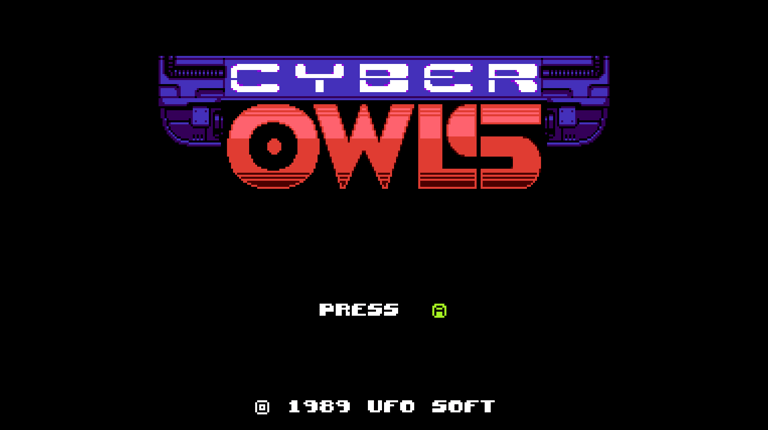

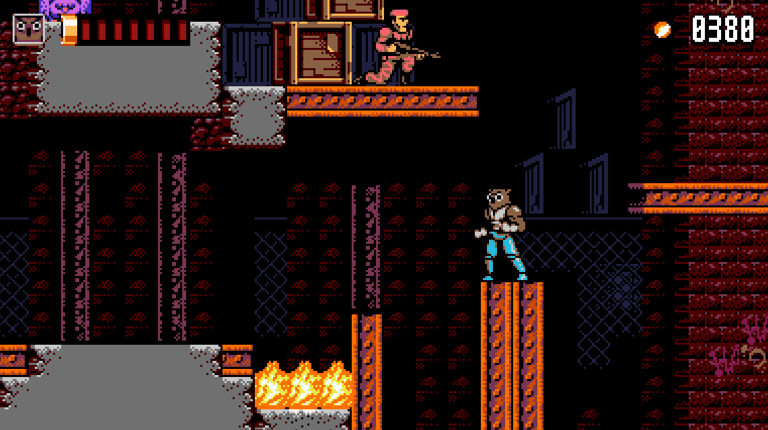

Final Thoughts, Whims, and Ponderances:
Night Manor would be awesome if combined with Valbrace’s battle system. Of course, the entire game would have to be expanded/reworked.
Devilition only works as a game/challenge because players can’t see the creatures’ directional attributes once they're placed. If these attributes could still be seen, the proceedings would be exceedingly easy. Too easy. It’s really a game of memory.
The three Campanella titles, although good, would (likely) not have been popular enough to become the company’s leading mascots and primary franchise.
Some games play well but lack a certain flavor or personality. Kick Club is a perfect example—the gameplay is foundationally sound, but the characters and enemies are generic to a fault.
Many of UFO 50’s games, even the better ones, are about 70% the length of a “normal” game released during the era. Others titles feel more akin to prototypes, proof of concepts, or beta versions.
Assets are regularly reused/recycled across the games. It’s understandable considering the difficulty in constructing so many titles in so tight a time frame, but the practice would seem tacky in any other context.
Although some of UFO 50's games are very good, none really trump the true classics of the genre. (An exception might be made for Magic Garden and Valbrace.)
The developers went well-beyond expectations in terms of the hidden 51st meta game. The little histories and achievement tracker for each individual disk is also a nice touch—it’s just a pity most players never notice them. The terminal codes, the garden, the built-in game filter are also appreciated and clever additions.
The most unsung achievement might be the game’s music—fifty games mean a lot of tracks! Kudos to the muscian(s).
The lack of lives and continues for certain games are clearly there to help obscure their brevity. It works, but...arbitrarily increasing a game's length/challenge is rarely recommended, and it hurts some of the games here.
With a bit more polish and, perhaps, some added levels, many of these games could be rereleased individually.
Question: Does UFO 50 trump similarly-themed games like Arcade Paradise, Retro Game Challenge, or King of the Arcade?
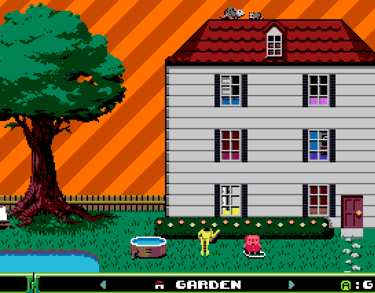

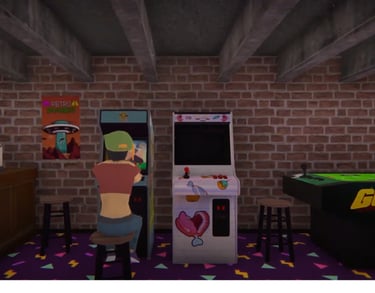

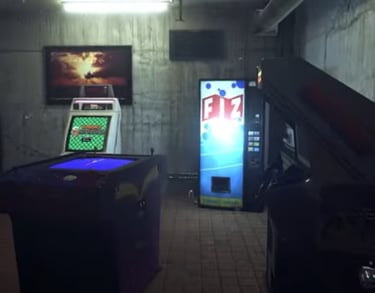

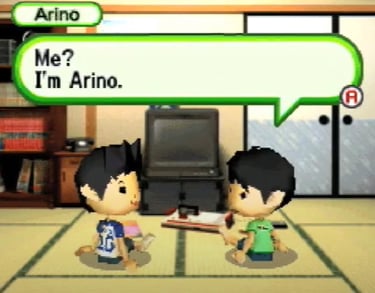

From top: King of the Arcade, Arcade Paradise, and Retro Game Challenge offer their own style of faux-retroism. They're all well worth checking out.
UFO 50 even offers an external distraction in its "Garden," a Little Computer People-style experience in which players can offer the little character items earned from the greater game(s).
Contact: lostnostalgiaproductions@gmail.com
Website: www.lostnostalgia.com
Like what we're doing? Please consider throwing us a dollar into our Patreon page's tip jar!




